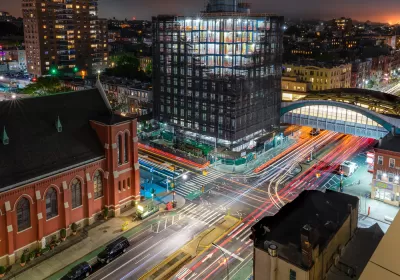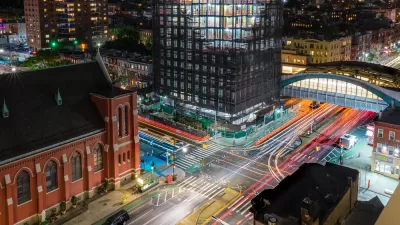Virtual reality meetings are a poor substitute for the normal public engagement process included in the city of New York's Uniform Land Use Review Procedure, according ton opinion piece recently published by City Limits.

Jo Anne Simon, a New York State Assembly representative and a Democrat representing the 52nd District, and Bradley Vogel, a Gowanus resident, pen an opinion piece for City Limits calling for the city of New York to continue to delay the ongoing effort to rezone the neighborhood of Gowanus in Brooklyn.
The articles argument rests of the question of whether the public engagement process possible during a pandemic is commensurate with the city's previous rezoning processes.
"The current limitations to large in-person gatherings and public engagement due to the pandemic substantially undermine the key process by which the public holds power accountable during land-use reviews," according to Simon and Vogel.
The city already paused the Uniform Land Use Review Procedure (ULURP) in for the rezoning, but is planning on restarting the process in September, with preliminary presentations in August, according to the article. The duo suggests that the city's desire to restart the ULURP responds to pressures from developers (i.e., "those who would benefit directly," according to the article). Other advocates have pushed to restart the ULURP because Gowanus is the most wealthy neighborhood to undertake a ULURP since Mayor Bill de Blasio took office.
"We understand proponents’ eagerness, but it is critical for the public to have a fair chance to weigh in meaningfully in a standardized manner on changes that will dramatically affect their lives, health, property, livelihoods, and neighborhoods. That’s essential. In fact, that was the entire reason ULURP was instituted three decades ago."
FULL STORY: Opinion: Fairness Requires that NYC Pause the Gowanus Rezoning

Maui's Vacation Rental Debate Turns Ugly
Verbal attacks, misinformation campaigns and fistfights plague a high-stakes debate to convert thousands of vacation rentals into long-term housing.

Planetizen Federal Action Tracker
A weekly monitor of how Trump’s orders and actions are impacting planners and planning in America.

Chicago’s Ghost Rails
Just beneath the surface of the modern city lie the remnants of its expansive early 20th-century streetcar system.

Bend, Oregon Zoning Reforms Prioritize Small-Scale Housing
The city altered its zoning code to allow multi-family housing and eliminated parking mandates citywide.

Amtrak Cutting Jobs, Funding to High-Speed Rail
The agency plans to cut 10 percent of its workforce and has confirmed it will not fund new high-speed rail projects.

LA Denies Basic Services to Unhoused Residents
The city has repeatedly failed to respond to requests for trash pickup at encampment sites, and eliminated a program that provided mobile showers and toilets.
Urban Design for Planners 1: Software Tools
This six-course series explores essential urban design concepts using open source software and equips planners with the tools they need to participate fully in the urban design process.
Planning for Universal Design
Learn the tools for implementing Universal Design in planning regulations.
planning NEXT
Appalachian Highlands Housing Partners
Mpact (founded as Rail~Volution)
City of Camden Redevelopment Agency
City of Astoria
City of Portland
City of Laramie




























